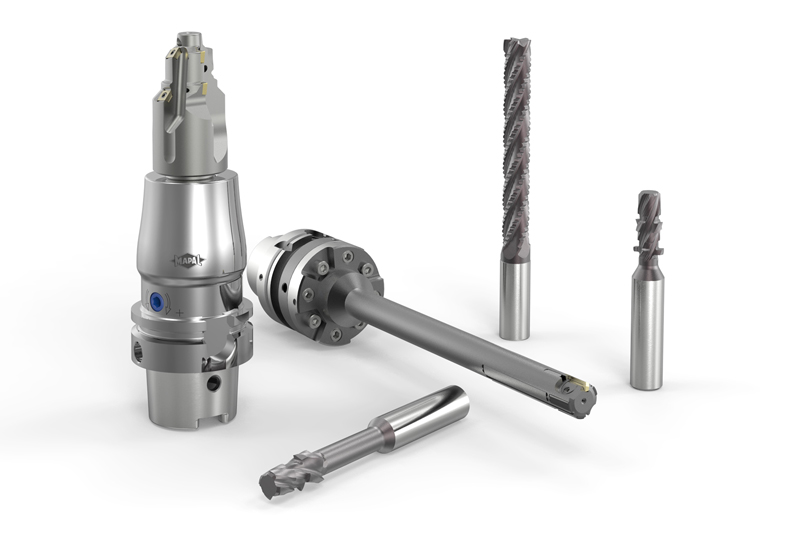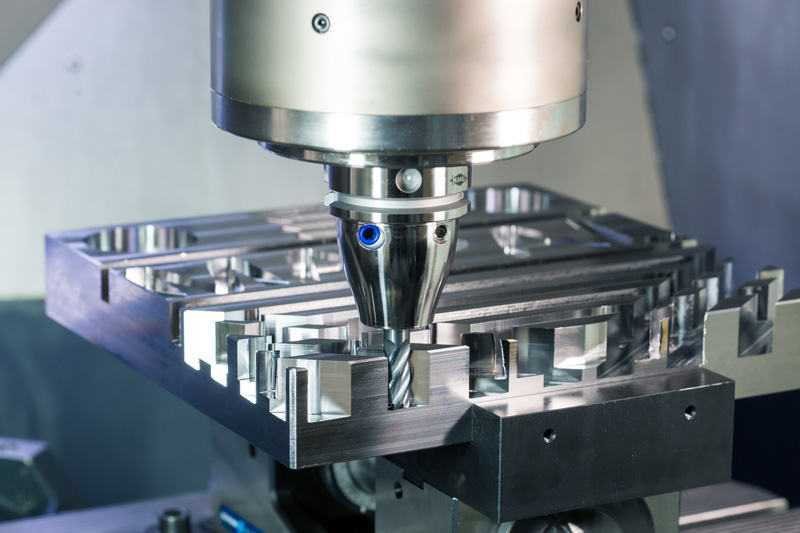01.01.2018
Trockenbearbeitung von Schichtverbundwerkstoffen im Flugzeugbau
MAPAL entwickelt Bohr-Senk-Werkzeuge für die gängigen Kombinationen
Die Herausforderungen, die Werkzeughersteller für optimale Lösungen in der Endmontage von Flugzeugen zu meistern haben, sind vielfältig. Dabei spielen nicht nur die unterschiedlichen Werkstoffe oder die Forderung nach höchster Prozesssicherheit, sondern auch das Kühlkonzept, die engen Toleranzvorgaben und die eingesetzten Maschinen eine entscheidende Rolle. MAPAL hat sich intensiv mit diesen Herausforderungen beschäftigt und entsprechende Werkzeugkonzepte auf den Markt gebracht. Unter anderem zur prozesssicheren Trockenbearbeitung von Materialkombinationen wie CFK-Aluminium oder verschiedenen Aluminiumlegierungen.

Hochfeste und gleichzeitig leichte Materialien sind in der Luftfahrt von zentraler Bedeutung. Durch neue Materialkombinationen können Flugzeugbauer das Gewicht senken, die Festigkeit und Korrosionsbeständigkeit erhöhen sowie eine Vereinfachung der Montage durch integrative Bauweise erreichen. Während Strukturbauteile aus Aluminium, Titan oder hochfesten Stählen auf Bearbeitungszentren oder Portalmaschinen bearbeitet werden, bearbeiten die Mitarbeiter in der Endmontage die Bauteile meist mit handgeführten Maschinen, Bohrvorschubeinheiten oder mithilfe von Robotern.
Deshalb unterscheiden sich die Anforderungen an die Werkzeughersteller und Werkzeuge für die Endmontage maßgeblich von denen für die Teilefertigung. Die bearbeiteten Bauteile in der Teilefertigung haben einen Wert von rund 1.000 bis 50.000 Euro haben. Die Bauteile in der Endmontage sind, abhängig vom Montagefortschritt, mit einem Wert von etwa 50.000 bis 2.000.000 Euro schon deutlich kostenintensiver. Die Flugzeugbauer müssen fehlerhafte Bearbeitungen entweder aufwendig und kostspielig manuell nacharbeiten oder die Bauteile komplett ersetzen. Aus diesem Grund wählen sie ihre Lieferanten für die Endmontage sehr gewissenhaft aus.
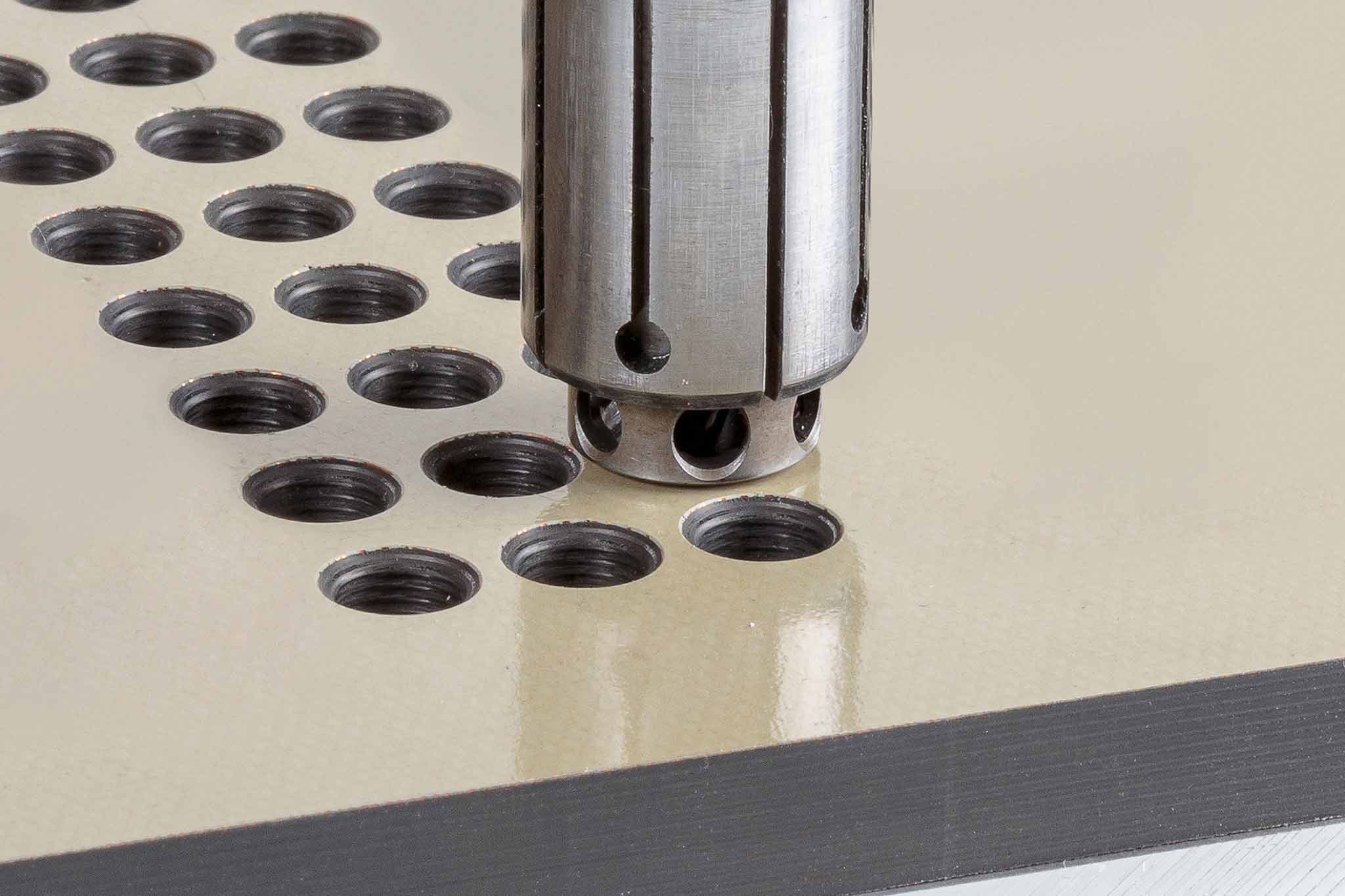
Challenges for tool manufacturers in final assembly
State-of-the-art: Manufacturing bores for rivet connections
Aircraft manufacturers use rivet connections for connecting the outer skin to the structural parts underneath. For this purpose, innumerable bores are drilled. To achieve the lowest resistance to the airstream as possible (low cW value), the rivet heads are countersunk in the outer skin. For this, an additional countersinking must be added to the bore entrance. In the past, a process with up to four individual machining steps was often required (drilling from the solid, boring, reaming, countersinking).
Today machining in just one step, where bore and countersink are realised in one process, is state of the art. Only in this way was automatic machining using robots possible. Previously this type of machining was realised with minimum quantity lubrication (MQL). After machining, the parts had to be disassembled, cleaned and remounted. In addition the cooling medium got inside the aircraft where further assembly steps were taking place at the same time. The demand for tools for dry machining different composite workpiece materials
was the consequence.
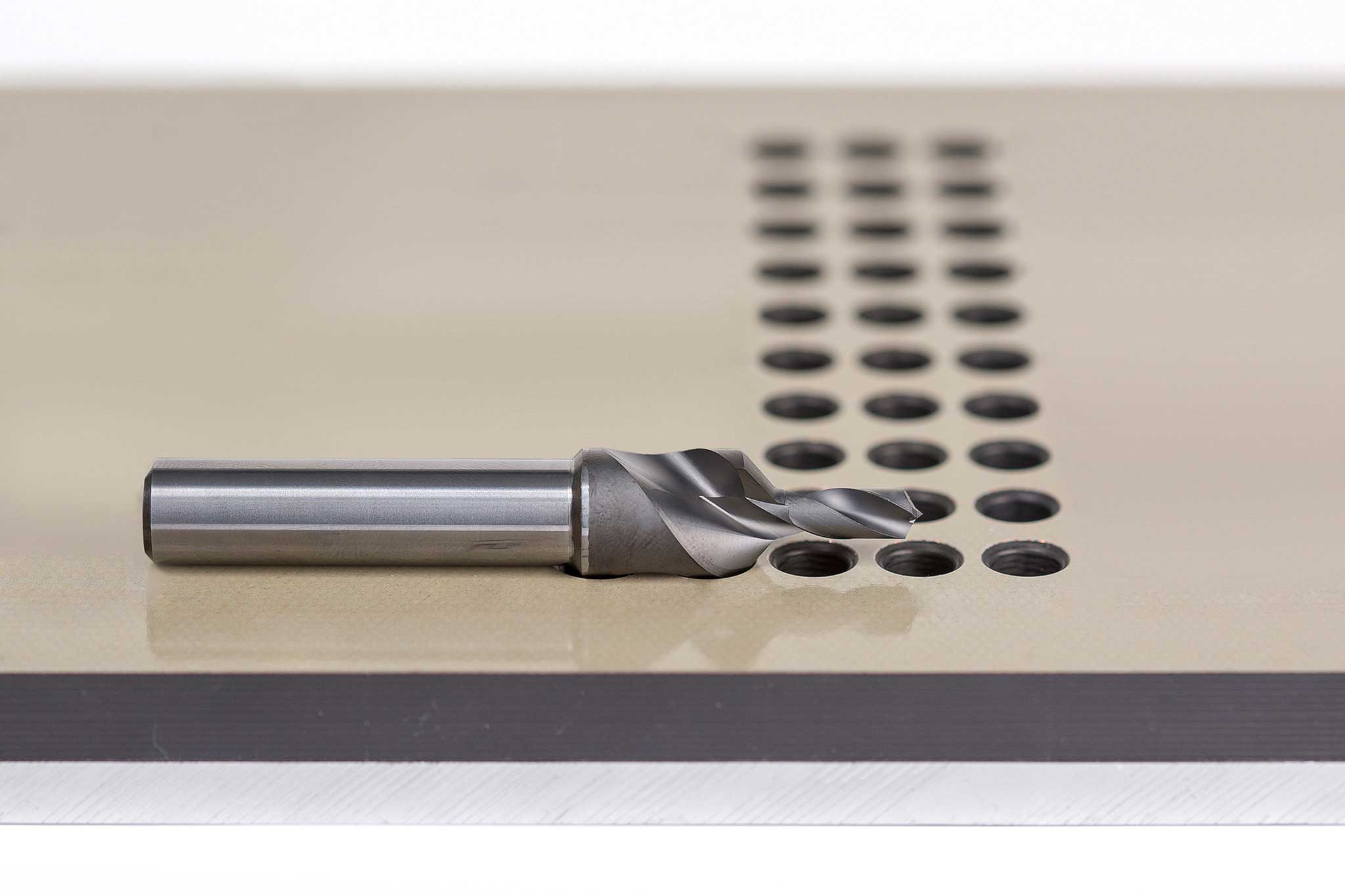
Call for dry machining
One-step processing
In contrast to a multi-stage drilling process, the combination tool must undertake all work steps (drilling, boring, reaming and countersinking) during machining and bore the rivet connection in one step. In this way, both the position of the bore and the alignment between the cylindrical part of the bore and the countersinking are ensured. Angular errors or offset that can occur with multi-stage operations are therefore excluded.
Together with other quality characteristics of the machining result such as diameter, transition radius and countersinking angle, the burr at the bore outlet plays an important role. If a burr has formed at the bore outlet for multi-stage bore machining that was manually executed, it can be removed without great effort with the aid of a countersink. If the process is automated in only one step, manual deburring is not possible. For this reason, the relevant tool must be able to drill virtually burr-free. Aircraft manufacturers usually specify a maximum burr height of 0.1 mm. In addition to the burrs at the bore outlet, the interlaminar burrs between the layers can arise. If they form, the multilayer composite must be dismantled at the end of the drilling operation to remove the interlaminar burrs. Dismantling is time consuming and cost-intensive and so these burrs must also be avoided.
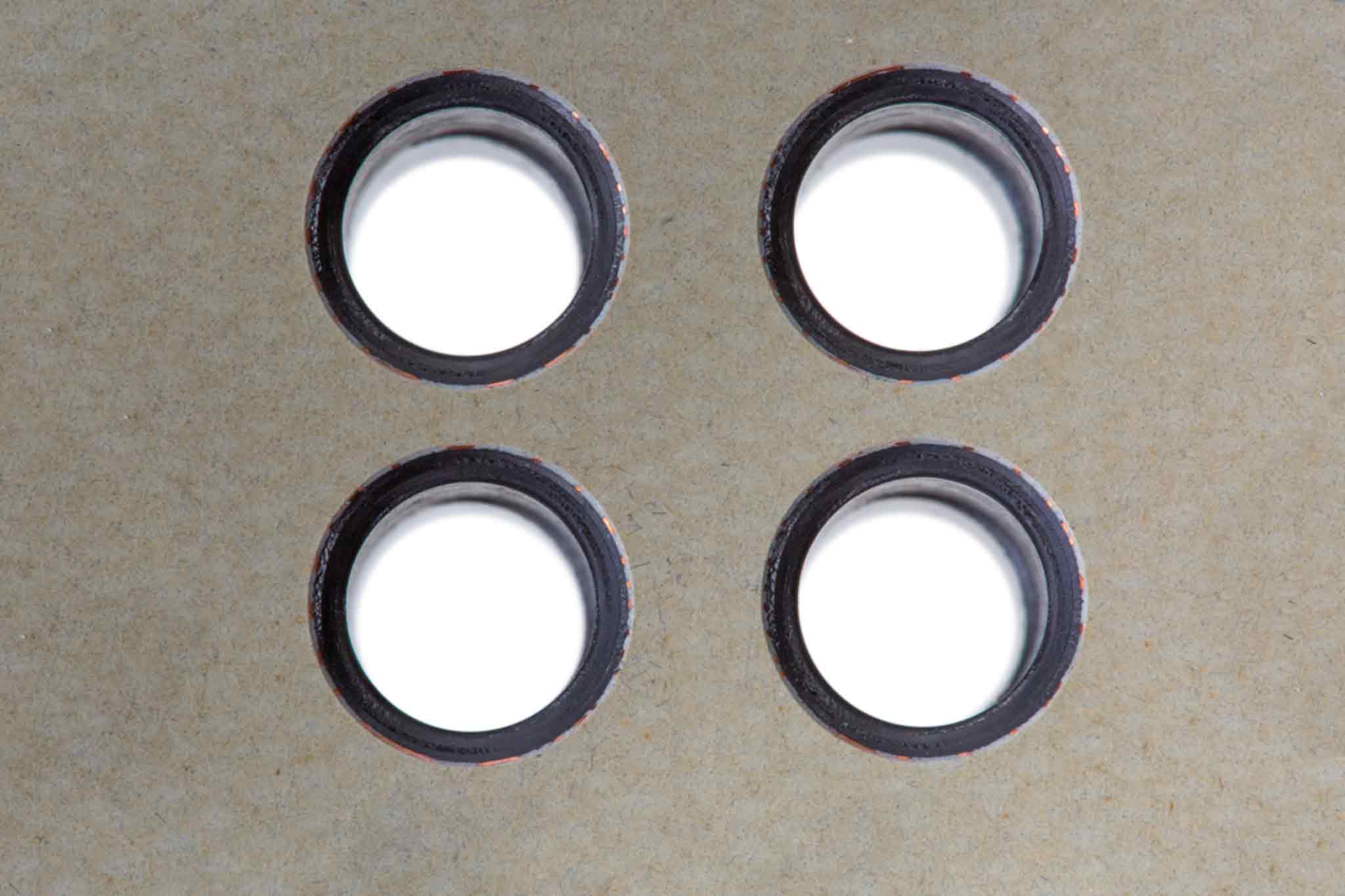
Wie wirkt sich das Maschinenkonzept auf die Zerspanung aus?
Das Maschinenkonzept beeinflusst maßgeblich die Werkzeuggeometrie. CNC-Anwendungen auf Bearbeitungszentren oder Portalmaschinen zeichnen sich durch hohe Steifigkeit und stabile Maschinenführung aus. Das Werkzeug wird dadurch sehr gut in der Bohrung geführt. Anwendungen mit Bohrvorschubeinheiten, Robotern oder Handbohrmaschinen sind weniger stabil und erfordern für hohe Genauigkeiten und damit Werkzeuge mit zusätzlichen Stabilisierungsmerkmalen.
Eine weitere Besonderheit beim Einsatz von Bohrvorschubeinheiten sind die sogenannten „Nosepieces“, auch Führungsbuchsen genannt. Durch eine lange schmale Führungsbuchse transportiert das System die Späne über das Werkzeug ab. Das Ziel der Späne ist ein Absaugkanal am Ende der Führungsbuchse. Damit dieser Prozess funktioniert, sind lange Spanräume notwendig. Der Werkzeughersteller muss diese richtig dimensionieren und an die jeweilige Bearbeitung anpassen.
Für die Bohrungen an der Außenhaut (Rumpf und Flügel) setzen Flugzeugbauer meist Portalmaschinen oder Roboter ein. Die unzugänglichen Bohrbearbeitungen, hauptsächlich in der Endmontage realisieren die Mitarbeiter dann mit Bohrvorschubeinheiten oder mit Handbohrmaschinen gebohrt.
Welche Herausforderungen bestimmen die Bearbeitung von Schichtverbundwerkstoffen?
Was ist bei Werkzeugen für die Bearbeitung von Schichtverbundwerkstoffen zu beachten?
Bei der Paarung CFK-Titan werden Werkzeuge benötigt, deren Schneidkante stabil genug ist, um dem duktilen Titan zu widerstehen. Gleichzeitig muss die Schneide scharf sein, um das CFK zu schneiden. Ob ein Bohrprozess allein ausreicht, um die Bohrung zu fertigen, oder ob die Bohrung im Nachgang noch gerieben werden muss, hängt bei dieser Materialkombination von der geforderten Bohrungstoleranz ab.
Werkzeuge zum Bohren von Schichtverbundwerkstoffen aus unterschiedlichen Aluminiumlegierungen, beispielsweise 7050 und 2024, benötigen keine verschleißhemmende Beschichtung. Denn die im Flugzeugbau verwendeten Aluminiumsorten enthalten wenig bis kein Silizium und können somit nahezu verschleißfrei gebohrt werden. Dies unterscheidet diesen Schichtverbund bei der Bearbeitung entscheidend von Verbunden, die CFK enthalten.
Werkzeuge, die für Materialkombinationen eingesetzt werden, die CFK enthalten, versehen die Werkzeughersteller beispielsweise generell mit einer Diamantschicht. Diese wirkt der Abrasion des CFK entgegen und ermöglicht hohe Standzeiten. Ein Nachschliff dieser Werkzeuge ist nicht möglich, da die verwendete Diamantschicht eine sehr hohe Härte aufweist.
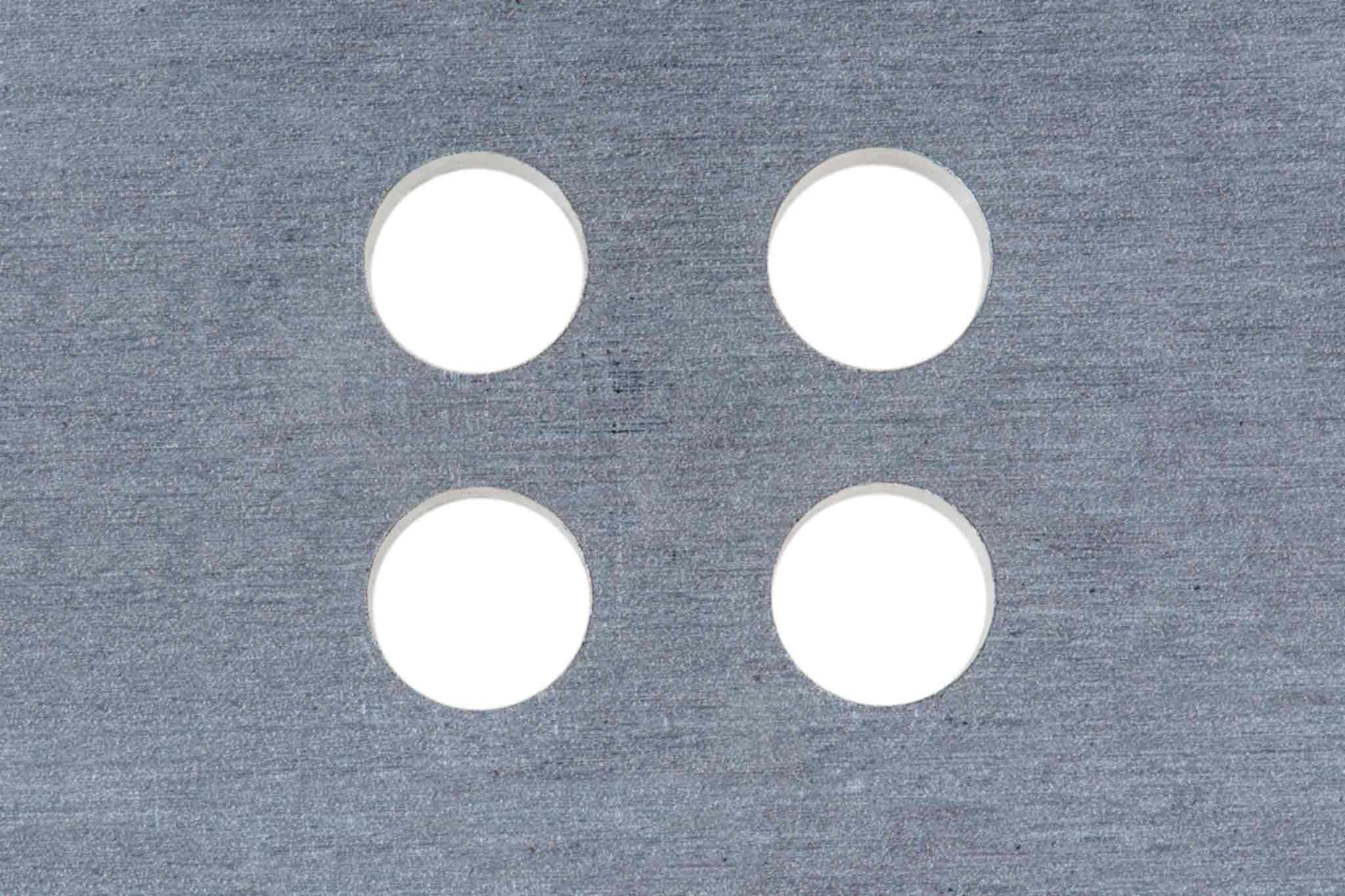
What has to be taken into account when designing the tools?
To ensure process reliability during machining, attention must be paid to the quality requirement, the material and the process for the design of the tool geometry. As the majority of bores in aircraft are produced with countersinking due to the rivets, the bore outlet is to be assessed more critically to exclude cost-intensive rework. Delamination and fibre projections must be prevented in CFRP material and burr formation in aluminium. Chip removal is also important for machining all individual materials as well as all composite materials.
If perfect chip removal is not ensured, the bore quality for dry drilling is significantly outside the required tolerances. However the biggest challenge for the development of a dry drill is the adaptation of the tool geometry to the unstable machining stable of the drill feed units in combination with cutting parameters and clamping systems (concentric collet).
Drilling/countersinking tool for machining aluminium/aluminium combinations
MAPAL has developed a drill with countersink step for dry machining composite materials made of different or the same aluminium alloys. Burr formation is kept as low as possible and an improved centring is achieved thanks to the special geometry features. The coating of the drill prevents the formation of a built-up edge at the cutting edge. Specially formed chip flutes ensure optimum chip removal. Air is used for cooling, preventing overheating of both the cutting edge and the aluminium and hence burr formation. The compressed air is also used to blow out the chips.
At one aircraft manufacturer, the drill is used i.a. for the bores on the longitudinal seam in the rear main span. A spindle speed of 2,959 RPM and a feed of 0.154 mm are applied here. The drill with its diameter of 4.748 mm and a 100° countersink step reliably produces 1,600 bores before the bores no longer lie within the demanded tolerance of 4.73 - 4.805 mm.
Drilling/countersinking tools for machining CFRP/aluminium combinations
chips.

In use at an aircraft manufacturer: the drilling and countersinking tool for machining aluminum-aluminum combinations
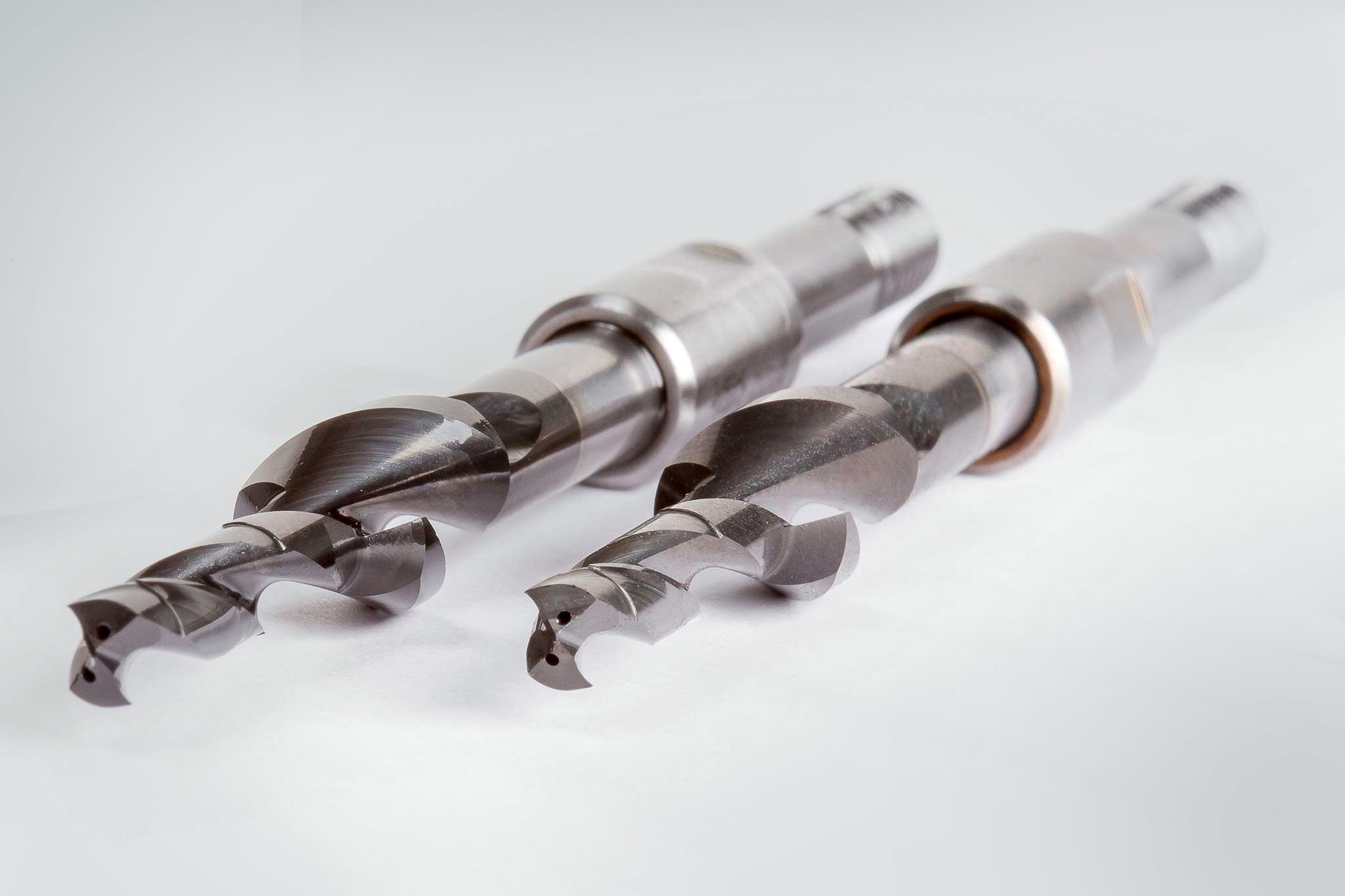
Drilling/countersinking tools for machining CFRP/aluminium combinations
To reliably dry machine composite materials made of CFRP and aluminium, MAPAL has also developed a drill with countersink step. The special geometry of the tool ensures that the heat caused by machining is not transferred to the part. In addition, neither part nor work environment is contaminated with coolant. The drill with two cutting edges made of solid carbide combines the properties of a drill for machining aluminium with those of a drill for CFRP machining. Reliable removal of the chips is ensured by the specially designed chip spaces. As CFRP is an extremely abrasive material, the drill is diamond-coated. This means that eight times the tool life is achieved compared with an uncoated drill.
The drilling/countersinking tool for dry machining CFRPaluminium combinations has been successfully used by customers. A spindle speed of 5,000 RPM and a feed of 0.1 mm are applied. The tool impresses not only with regard to process reliability, tool life and machining result, but also because of the steady boring process.


